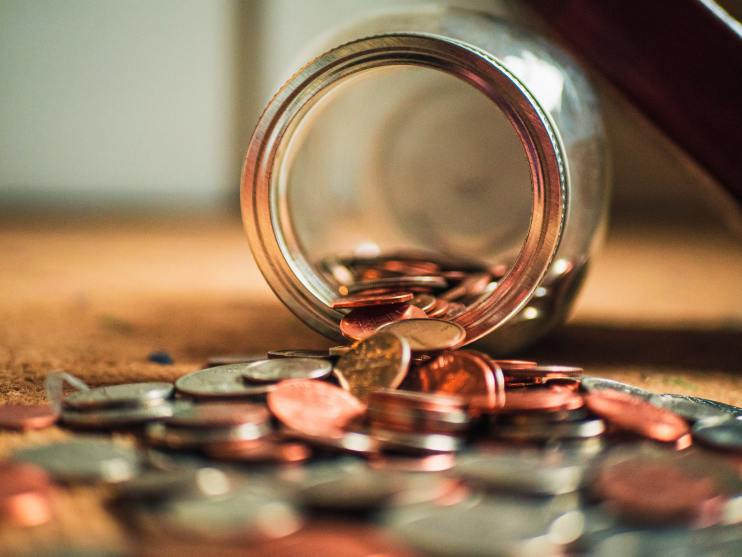Crypto traders redeem USDT en masse as Bitcoin offerings grow

Data from CryptoCompare shows that the price of Bitcoin kept on moving sideways throughout last week around the $30,000 mark. BTC’s price dipped to lows near $28,500 and highs around $30,500.
Ethereum’s Ether, the second-largest cryptocurrency by market capitalisation, moved in a way similar to Bitcoin, trading between the $1,900 and $2,100 range. At the time of writing, ETH is being traded for $2,050 a coin.
Headlines in the cryptocurrency space this week centered around the aftermath of the collapse of Terra’s ecosystem and how traders in the space reacted to the collapse of one of the leading altcoins and its algorithmic stablecoin.
The whereabouts of Terra’s $3.5 billion Bitcoin reserve that had been set up to back the UST stablecoin were initially a mystery, as according to forensics firm Elliptic, the Luna Foundation Guard (LFG) deployed the fund to purchase UST and defend the peg on May 9, after the peg was lost a day earlier.
The LFG, later on, announced it deployed nearly all of its reserves to defend the UST’s peg, and is set to use the remainder to compensate UST holders.
The collapse of Terra’s ecosystem has seen its co-creator Do Kwon propose a hard fork to revive the project. A hard fork would see the collapsed network live on as ‘Terra Classi’ while a new project called Terra would live on with airdrops sent to existing LUNA and UST holders.
Terra’s collapse saw cryptocurrency traders move for more defensive assets and sell large amounts of leading stablecoin USDT, which briefly lost its peg.
As a result, Tether’s circulating supply dropped from $83 billion to $73 billion. The stablecoin is meant to always be worth $1 but after Terra’s fall from grace, it slipped to a $0.95 low as investors panicked over the collapse. After USDT lost its peg, Tether claimed that it kept on honouring redemptions at a 1:1 ratio with the US dollar.
Centralised stablecoins like USDT and its competitors are meant to keep enough fiat currency reserves to allow users to redeem their stablecoin holdings for US dollars. These reserves are kept in cash and cash equivalents, including Treasury bonds.
Tether has historically published reports on its reserves, however, these often include a form of short-term unsecured debt issued by companies called commercial paper. As investors move away from USDT over its controversy, Tether CTO Paolo Ardoino has said the company redeemed $7 billion in only 48 hours “without the blink of an eye”.
Meanwhile, the stablecoin issuer released its attestation report for the first quarter of the year, revealing a reduction in commercial paper.
El Salvador hosts bankers
The president of El Salvador, Nayib Bukele, has revealed that 44 countries met this week in El Salvador to discuss Bitcoin among other things including financial inclusion, banking the unbanked, and a digital economy.
In a tweet, Bukele wrote that the 44 countries were represented via 32 central banks and 12 financial authorities. The countries represented are primarily developing nations including Nigeria, Egypt, Nepal, Pakistan, Bangladesh, Kenya, Uganda, Paraguay, Angola, Guinea, and Madagascar.
As officials discuss the flagship cryptocurrency in El Salvador, Brazil’s only stock exchange, B3, is planning to launch Bitcoin and Ether futures “in the next three to six months”, according to its Chief Financial Officer André Milanez.
Similarly, 132-year-old Swiss asset manager Julius Baer has revealed its working on offering cryptocurrency-related services to wealthy clients, and sees the current turmoil in the market as a potentially defining moment for the digital asset class.
On top of that, a new report has suggested covert Bitcoin mining operations are thriving in China, to the extent the country represents the second-largest hashrate on the network. The report is surprising as the country’s government banned cryptocurrency mining operations within its borders.
Coinbase lets app users access ETH dApps
While most headlines focus on Bitcoin and Ethereum becoming more easily available to investors, Nasdaq-listed cryptocurrency exchange Coinbase is letting a “small set” of its users access Ethereum-based decentralised applications (dApps) directly from the Coinbase app.
The move will help users purchase NFTs on various marketplaces beyond Coinbase’s own platform, trade on decentralized exchanges like Uniswap and SushiSwap, and lend using decentralized money markets like Compound.
Along with the mobile web browser that lets users access dapps, Coinbase will include a hot wallet that customers can use to exchange funds. The wallet will have a co-custodial setup, meaning the private keys to it will be stored by Coinbase and by the user.
Over the week, the exchange also launched a crypto-native think tank dubbed the Coinbase Institute. The think tank will publish research on the cryptocurrency space and Web3.
Francisco Memoria is a content creator at CryptoCompare who’s in love with technology and focuses on helping people see the value digital currencies have. His work has been published in numerous reputable industry publications. Francisco holds various cryptocurrencies.
Featured image via Unsplash.